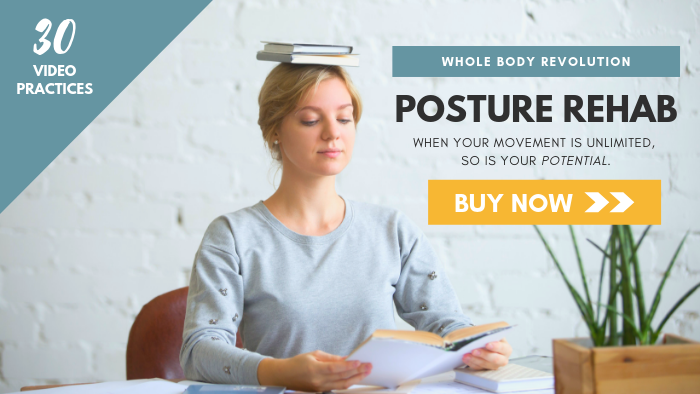Everyone always asks me what to do.
What’s the best exercise for….?
How should I stretch….?
Should I do Crossfit/OrangeTheory/Pilates?
Listen, what you do is important. You can’t just sit around on the couch eating donuts all day and magically have a healthy body.
I WISH!
(Although I might take brie and crackers over donuts…)
Stretching, foam rolling, mobility training, it all works.
But more important than WHAT you do is HOW you do it, i.e. the state your body is in before you stretch, exercise, or mash your fascia on a myofascial release ball.
When I was going to school for posture and movement therapy, there was a quote: being precedes doing.
I loved it. I got it, like in my bones. But I couldn’t exactly explain it. What does that mean — in practical, tangible terms?
Well, fifteen years later, I have some idea. BEING is the state your body is in BEFORE YOU START THE DOING.
So, if you’re all stressed and worried and your monkey mind is frantically jumping all over your to-do list when you start to stretch your hamstrings….
Well then the stretch you’re doing is irrelevant. It ain’t gonna work.
Why? Because your nervous system is in go-mode and you need it to shift into rest and restore before your muscles are going to release all that pent up tension.
The number one thing you need to do before you stretch is to get yourself to a receptive state.
Huh?
Yeah, yeah, I know, you’re like GREAT SUKIE, how do I do that?!
It all comes down to the nervous system. And how activated it is.
Simply put, if your switch is stuck in the ON position (i.e. you just spent two hours in traffic and thirty-seven people cut you off and you’re pissed at your boss for criticizing the presentation you spent all week putting together), you’re gonna feel like you just downed 32 oz of nitro cold brew.
Not so great for relaxed muscles.
But the off switch doesn’t work either — ideally you need to be like a dimmer placed somewhere in the middle giving off a nice warm glow.
That’s called “neural regulation.” Also, homeostasis . — or, more colloquially, balance. And it’s a pleasantly relaxed place to be.
A place that is conducive to releasing muscle tension.
And getting flexible.
It’s fundamental to relieving muscle pain. You can’t relax without first getting your nervous system a heaping dose of CTFD. (Look it up. I’ll wait.)
This is why I’ve designed my Posture Rehab program around neural regulation. Not because it sounds fancy. Because it’s FUNDAMENTAL to your well-being.
This is why we start with breathing practices rather than diving into hamstring stretches and hip mobility.
This is why my clients get results when nothing else has worked.
Not because I have some amazing secret stretches no one else has ever heard of.
(Seriously folks, there’s nothing new under the sun and if more information were all we needed, Google would have solved every problem by now.)
It’s because I focus on the nervous system. To a nauseating degree.
Listen, if you want to make actual lasting changes to your posture, to move BETTER than you ever have before, you need Posture Rehab.
